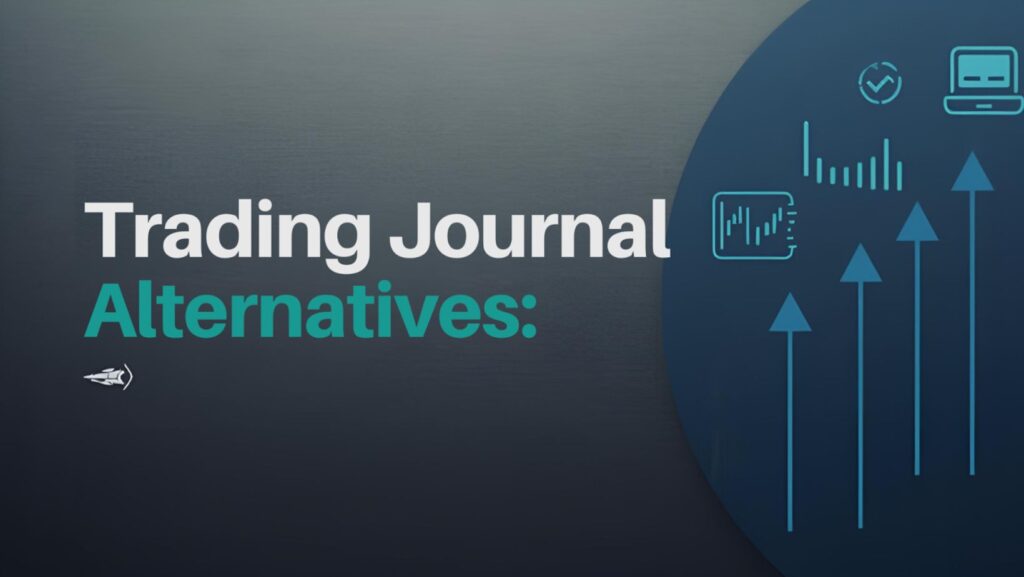
10 Trading Journal Features Compared Across Leading Platforms
An amazing trading journal not only lets you track trades but also identifies patterns, mistakes, and habits.
The best trading journal software tools in 2025 embrace automation, analytics, and behavioral science to help traders turn their trade data into actionable perceptions.
Not all journals are equal in their emphasis on data science versus psychological science and workflow.
Distinguishing between useful features and noise can mean the difference between analysis paralysis and being able to make legitimate strides towards answering a question.
1. Trade Import Accuracy and Broker Support
The foundation of every great trading journal is accurate data.
Tradervue is generally thought to be the best here.
Years of development, dozens of broker integration options, reasonable imports with timestamps, and auto-categorization mean your data is never going to decay with time.
Conversely, RizeTrade is geared toward fast manual entry and tagging during trading sessions, targeting day traders or smaller firms that do not require wide-ranging capability and scale.
For those using multiple accounts, Tradervue and TradesViz are the most reliable in how they handle the data; Trademetria also has a reliable import on the free version.
2. Analytical Depth and Performance Metrics
Tradervue is industry-leading in reporting, offering the ability to break down your trades by trade duration, tagging, instrument, and market condition.
Traders can visualize their performance easily with helpful equity curves and heat maps.
Because day traders care more about intraday and per-session metrics, RizeTrade gives you a simpler, more actionable view of when you tend to be a better day trader.
Edgewonk also connects the metrics with emotional state, confidence, and discipline, with data on behavior and mood incorporated also.
3. Psychology and Behavioral Tracking
The best app to use when charting emotions (fear, confidence) each time you take a trade is Edgewonk.
It allows you to connect your performance with your emotions and create a behavioral performance map.
While RizeTrade doesn’t specifically address psychology, it does a good job of providing feedback on timing and patience through its session-based format.
Unlike Edgewonk, Tradervue does not track emotions, but it does allow traders to add free-text notes or reflections for trades.
4. Visualization and Dashboards
The favorite in this category is TradesViz, which has hundreds of visual metrics and dashboards to visualize profitability by symbol, hour, or strategy, which you can customize to fit your process.
Reports from Tradervue are concise and business-like, featuring a focus on clarity, while visual summaries on RizeTrade are session-based, quick, and easily processed, and are designed for daily feedback on trader performance.
5. Speed and Workflow Efficiency
RizeTrade can best be described as being built for the day trader.
Users are given immediate input, instant summaries, and a frictionless experience lacking in most other trading platforms.

Tradervue is another option, which is a little slower with tagging and filtering, but has some incredible analysis capabilities.
For new traders, Trademetria offers a good balance of keeping you on the right path, but not overwhelming.
6. Customization and Flexibility
By far, the best in the field is TradesViz, whose customizable dashboards and AI query system allow for completely customized performance views.
However, Tradervue has a more developed tagging and filtering system than RizeTrade, which simplifies and reduces the number of options.
Notion is not a trading platform, but worth a mention; it allows traders to build any custom layout, template, or note they want.
7. Pricing and Free Plans
RizeTrade has no fees and is designed for day traders, but includes all core functionality, and Trademetria has a fully functional free tier.
Tradervue and TradesViz run freemium services with no cost for reduced services or paid subscriptions for improved tools, while Edgewonk charges users a single upfront fee.
Some traders prefer Edgewonk to freemium services.
8. Journaling Notes and Context Capture
Tradervue has note attachments for each trade and also for each day to keep qualitative feedback along with performance metrics.
RizeTrade provides a place for traders to jot down short, session-specific notes, keeping journaling fast, efficient, and less involved.
Notion works well for those who want to mix notes, images, and goals, and for traders who want to mix their journal with their learning and documenting.
9. Accessibility and Platform Availability
Tradervue and TradesViz are cloud-based and can be used anywhere there’s an internet connection. RizeTrade is browser-based and was designed to be quick to review (especially on a mobile device).
Edgewonk can only be used on desktops, which some traders say is a drawback.
10. Update Frequency and Support
RizeTrade and TradesViz are also under active development with frequent new integrations and performance improvements.
Tradervue is a very stable app with a good reputation, but it does not add features as frequently as the other applications.
Traders looking for longevity may prefer this balance, while traders looking for leading-edge features may prefer RizeTrade or TradesViz.
Final Thoughts
Tradervue has the edge for accuracy, analytics, and industry reputation.
But RizeTrade is faster, more organized, and clearer for day traders. Edgewonk connects your trading data with your mindset.
TradesViz has strong customization features and visual analytics.
Trademetria is free and easy to get started.
It’s not about the tracking. It is about understanding your trades.
Just as it promotes risk management, execution, and consistency, the right journal turns data into discipline, and discipline into profit.





